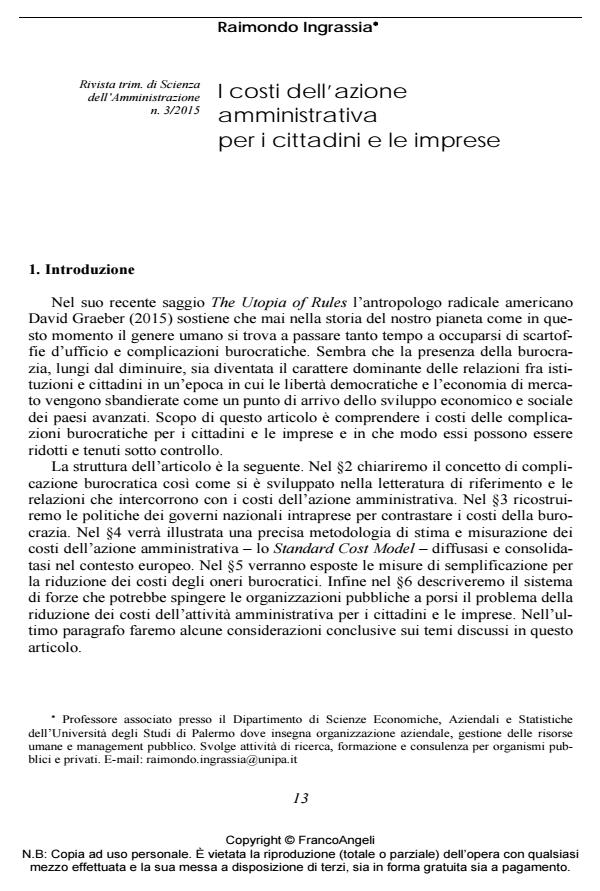I costi dell’azione amministrativa per i cittadini e le imprese
Titolo Rivista RIVISTA TRIMESTRALE DI SCIENZA DELL’AMMINISTRAZIONE
Autori/Curatori Raimondo Ingrassia
Anno di pubblicazione 2015 Fascicolo 2015/3
Lingua Italiano Numero pagine 21 P. 13-33 Dimensione file 115 KB
DOI 10.3280/SA2015-003002
Il DOI è il codice a barre della proprietà intellettuale: per saperne di più
clicca qui
Qui sotto puoi vedere in anteprima la prima pagina di questo articolo.
Se questo articolo ti interessa, lo puoi acquistare (e scaricare in formato pdf) seguendo le facili indicazioni per acquistare il download credit. Acquista Download Credits per scaricare questo Articolo in formato PDF

FrancoAngeli è membro della Publishers International Linking Association, Inc (PILA)associazione indipendente e non profit per facilitare (attraverso i servizi tecnologici implementati da CrossRef.org) l’accesso degli studiosi ai contenuti digitali nelle pubblicazioni professionali e scientifiche
Scopo di questo studio è comprendere i costi delle complicazioni burocratiche per i cittadini e le imprese e in che modo essi possono essere ridotti e tenuti sotto controllo. L’articolo affronta pertanto i seguenti temi. Il concetto di complicazione burocratica così come si è sviluppato nella letteratura di riferimento e le relazioni che intercorrono con i costi dell’azione amministrativa. Le politiche dei governi nazionali intraprese per contrastare i costi della burocrazia. La metodologia di stima e misurazione dei costi dell’azione amministrativa - lo Standard Cost Model - diffusasi e consolidatasi nel contesto europeo. Le misure di semplificazione per la riduzione dei costi degli oneri burocratici. Il sistema di forze che potrebbe spingere le organizzazioni pubbliche a porsi il problema della riduzione dei costi dell’attività amministrativa per i cittadini e le imprese. La tesi di fondo è che la forza trainante di questo sistema dovrebbe essere quella del confronto trasparente con la rete di coloro ai quali tali costi sono destinati.
Parole chiave:Organizzazioni pubbliche - costi complicazioni amministrative - accountability pubblica
Raimondo Ingrassia, I costi dell’azione amministrativa per i cittadini e le imprese in "RIVISTA TRIMESTRALE DI SCIENZA DELL’AMMINISTRAZIONE" 3/2015, pp 13-33, DOI: 10.3280/SA2015-003002